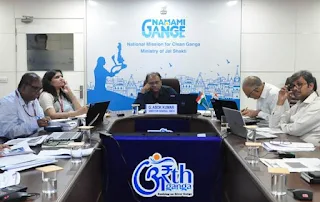
- These projects are expected to improve the water quality and biodiversity of the Ganga basin, as well as enhance the livelihoods and well-being of the people living along the river.
- Of the seven projects, four pertain to sewage management in Uttar Pradesh and Bihar, which are two of the most populous and polluted states in India.
- These projects will create new sewage treatment plants (STPs) and interception and diversion (I&D) works to prevent untreated wastewater from flowing into the river. The total capacity of these STPs will be 161 million litres per day (MLD), which will significantly reduce the organic and nutrient load on the river.
- One of the projects is for preparation of urban river management plans (URMPs) for 60-70 cities in two phases, costing around Rs. 20 crore.
- Another project is for initiation of M.Sc. course in freshwater ecology and conservation at Ganga Aqualife Conservation Monitoring Centre, Wildlife Institute of India, Dehradun at an estimated cost of Rs. 6.86 crore for 10 years.
Question:
Q.1 Which of the following states has the highest number of sewage management projects approved by NMCG?a. Uttar Pradesh
b. Bihar
c. Uttarakhand
d. West Bengal


